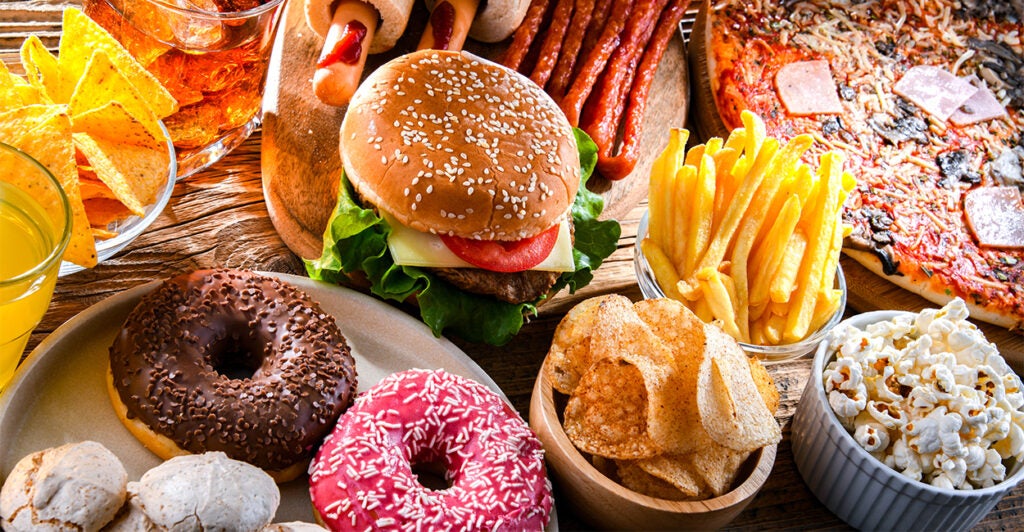“If you’re five-foot-three and you’re 300 pounds, taxes ought not to pay for your bags of Fudge Rounds,” opines Oliver Anthony in his No. 1 hit debut country song “Rich Men North of Richmond.”
The timing of the song’s release could not have been better: Constituents have undoubtedly raised the issue of how our tax dollars are being spent with members of Congress during their August recess. And that particular line touched on an issue that Congress should address when the House and Senate reconvene this month: the nutritional benefits for the poor that the average taxpayer is paying for.
In the coming weeks, the House and Senate Agriculture committees will consider the next “farm bill.” Contrary to the bill’s common title, more than 80% of the spending actually goes to food stamps recipients via the Supplemental Nutrition Assistance Program, or SNAP, not directly to farmers.
Ironically, this program with nutrition in its very name has no nutritional standards whatsoever. By law, food stamps can generally be used to purchase anything edible or drinkable sold by a participating retailer, so long as the item does not contain alcohol, tobacco, or medicine and is not sold hot. In practice, 20% of benefits are spent on sweetened beverages, candy, and desserts—including Fudge Rounds.
Members of Congress will consider two paths for reforming SNAP—one that would tighten the program’s rules and another that would loosen them.
Sen. Marco Rubio, R-Fla., and Rep. Josh Brecheen, R-Okla., recently introduced the Healthy SNAP Act of 2023, which would specifically prohibit these unhealthy items from being purchased with food stamps. The bill would also go a step further and require the U.S. Department of Agriculture to establish a narrower list of eligible foods based on nutritional content.
In this sense, SNAP would be made a bit more like the Special Supplemental Nutrition Program for Women, Infants, and Children, or WIC, which provides more targeted assistance to promote good nutrition and overall health among its beneficiaries.
Even with food stamps, low-income mothers and their children were found to be at higher risk of poor health outcomes due to malnutrition, prompting the creation of WIC in 1974. As directed by statute and subject to a budget constraint, USDA designs WIC food packages to contain a variety of foods that fill nutritional gaps in the diet of the typical beneficiary in each eligibility category. Now, with poor nutrition rather than insufficient caloric intake a concern for a larger population, the need to extend similar standards to SNAP is more apparent.
However, the National Grocers Association opposes the Rubio-Brecheen proposal, asserting that it would impose substantial costs on retailers and frustrate consumers.
This claim is contradicted by retailers’ demonstrated ability to handle the expectations of current law. Their checkout systems already identify which items are eligible for purchase under WIC or SNAP. They also accept multiple payment methods during a single check-out to ensure that each program pays for the correct items and that the customer pays for items that are eligible under neither. Nothing in this process would change. The National Grocers Association’s position simply is not credible and should be rejected.
On the other hand, some in Congress would not only pass on this opportunity to improve nutrition in SNAP but would make matters substantially worse.
The Hot Foods Act of 2023, introduced by Rep. Grace Meng, D-N.Y., and now with a bipartisan list of 73 co-sponsors, would remove the exclusion of hot foods from SNAP. She rightly observes that there is little justification for the fact that current law allows a frozen rotisserie chicken but not a hot rotisserie chicken to be purchased with SNAP benefits. However, the exclusion prevents a lot of unhealthy choices.
The most vocal advocate of this bill is the Association for Convenience & Fuel Retailing (formerly the National Association of Convenience Stores), whose members would be allowed to accept food stamps for all manner of unhealthy fast food-style items that comprise the bulk of their food sales. The use of SNAP benefits at convenience stores is already on the rise. In the absence of strong nutritional standards, simply removing the prohibition on the purchase of hot foods in SNAP would be disastrous for nutrition.
Simply put, taxpayer-funded nutrition programs should provide only nutritious foods and beverages. The upcoming farm bill presents an opportunity for Congress to establish commonsense nutrition standards for food stamps—to make SNAP a bit more like WIC and a bit less like cash.
Congress must ensure that federal nutrition programs do, in fact, provide proper nutrition to those in need. Those in need, especially children, and the hardworking Americans who are taxed to fund the programs deserve nothing less.
Have an opinion about this article? To sound off, please email letters@DailySignal.com, and we’ll consider publishing your edited remarks in our regular “We Hear You” feature. Remember to include the URL or headline of the article plus your name and town and/or state.
